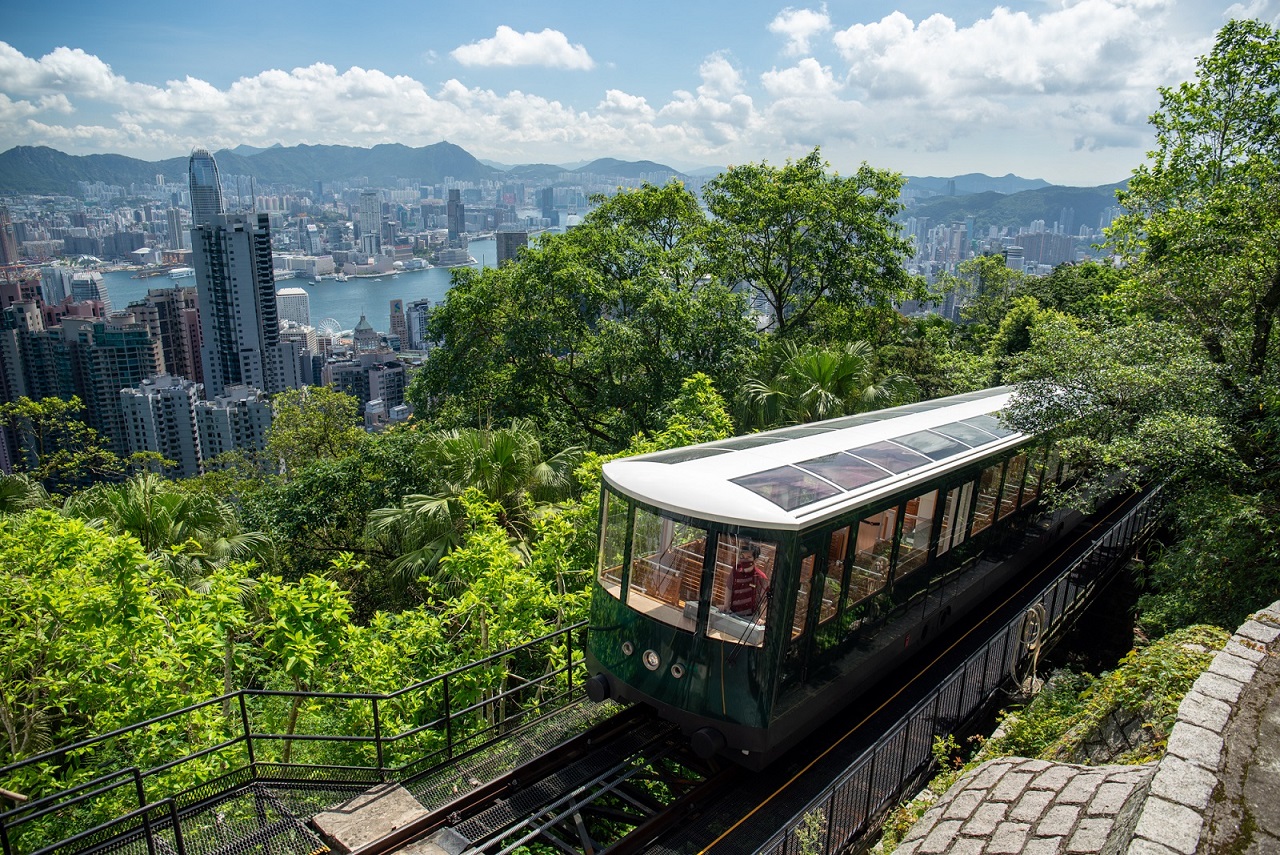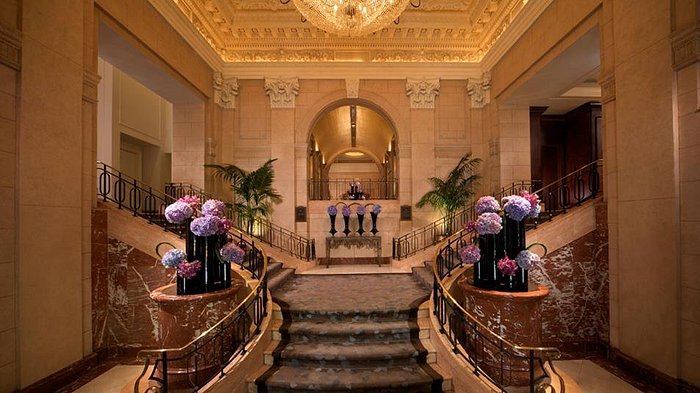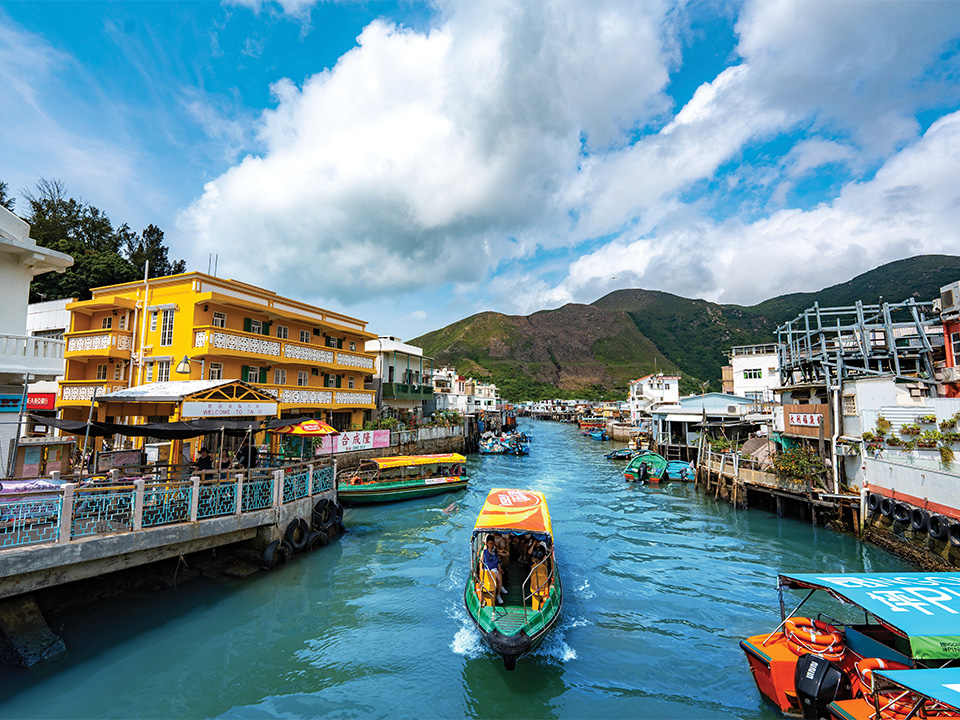A bustling international metropolis, Hong Kong knows how to reconcile the old and the new. Influenced by over 150 years of British colonialism and 5,000 years of Chinese traditions, the city and its remote islands offer travelers a unique opportunity to step back in time.
The Giant Buddha of Po Lin Monastery

In Hong Kong, any spiritual journey passes through Po Lin Monastery . This large building is perched on a mountain on the island of Lantau, one of the most remote from Hong Kong and a veritable little paradise of greenery. Founded in 1906 by three monks, the monastery initially bore the name of “La Grande Hutte” before adopting, in 1924, that of “temple of the Precious Lotus”.
Small in size at first, it gradually expanded and now houses the largest outdoor statue of the seated Buddha in the world: made of bronze, it measures 34 meters and weighs 250 tons. The Giant Buddha, or Tian Tan, attracts both pilgrims and tourists eager to admire this monumental structure. You can approach it in two ways: by climbing the 268 steps that lead to it or by embarking on one of the many gondolas that criss-cross the surrounding waters and from where you can admire the panoramic views of the China Sea. southern.
The Star Ferry

In operation since 1880, this iconic ferry links Hong Kong Island to the Kowloon Peninsula, crossing Victoria Harbour, one of the most famous and busiest in the world, in seven minutes.
Observing its double deck and its wooden benches, one may have the impression that it dates back, but its little air of the 1920s allows you to go back in time in a way. It offers passengers a new point of view of the silhouette of the buildings that stand out against the sky, for a ridiculously low price (the passage costs only $0.39). The story of the origin of the service is worth telling: an Indian cook named Dorabjee Naorojee Mithaiwala is said to have decided one day to change his vocation to take up ferry transport. From then on, he would have given all the boats he acquired a name containing the word star, hence the name Star Ferry, which currently designates this service.
City tour by tram

Explore the city streets like the locals do as you hop on one of the old double-decker trams that have been in operation since 1904. As you cross the city from east to west along the busy northern coast of Hong Kong Island, you will certainly not fail to observe the contrast between these old rickety vehicles and the modern skyscrapers that dominate it. It’s exactly like Hong Kong, where old and new come together.
Originally, trams had only one floor. They were shipped as parts from the UK and assembled in Hong Kong. When it officially opened, the service included first and third class, and tickets also came from England. Today, the class system has been abolished and the cost of the ticket is the same for everyone, a measly $0.30. I advise you to choose a seat upstairs near a window; you will thus have a breathtaking view of the very colorful districts of the city.
Murray House

Anyone visiting Hong Kong should pass by Stanley, a quiet little town planted on the coast and located in the southern part of Hong Kong Island. The views of Stanley Bay are spectacular and the promenades well maintained; the public has access to many of its beaches. With a view of the bay, the Murray House was built in 1844, in the midst of the Victorian era. This building, which served as barracks for the British army, was named in honor of Sir George Murray (1772 – 1846), a British army officer and politician.
Originally built in the business district of Hong Kong, it was moved stone by stone to its current location to make room for new buildings. Given its historical significance and architectural beauty, it has been renovated and is now considered a heritage building. Many families meet there on weekends. Murray House is home to a restaurant and the Hong Kong Maritime Museum.
The Victoria Peak Tramway

In operation since 1888, this funicular leads to Victoria Peak, a peak rising 396 meters above sea level. There are spectacular views of the city of Hong Kong. The route stretches over 1.4 km and has 27-degree slopes: impossible for passengers to remain standing. At the time of its official opening, it was Asia’s first funicular; it was therefore considered an engineering marvel. It first ran on coal-steam before switching to electricity. The car itself has undergone a number of transformations intended to modernize it, but its old-fashioned wooden bench seats help to preserve its old-world look, not to mention that it still moves on its original tracks.
The terminus in the lower part houses a gallery housing a collection of memorabilia recounting 120 years of history. From old uniforms to photos of dignitaries riding the tram for the first time, the collection offers a historical perspective of the vehicle’s beginnings and evolution.
The Peninsula Hotel

The famous Peninsula Hotel offers its guests the opportunity to have a high tea dinner like the British colonials did. Built in 1928, this elegant neo-classical building is one of the most expensive hotels in Hong Kong, but also a place steeped in history. This is where the rich and famous once stayed, arriving by helicopter directly to the helipad’s rooftop platform and then having a fleet of Rolls Royces at their disposal. It was also there, more precisely on the third floor, where the Japanese had established their headquarters, that the British governor of Hong Kong surrendered in 1941, thus ending the Battle of Hong Kong.
The high tea dinner is an old British tradition that Hong Kong has made its own and which is now part of its essential rituals. Far removed from a simple coffee break, this is a gastronomic event like no other. Exceptionally refined, the experience does not fail to leave you nostalgic when you think of the personalities of the time who met there in the afternoon to have tea and discuss culture and politics. (Photo: gribby/Flickr Creative Commons)
Tai O, the lake city

Tai O gives the impression of having escaped the passing of the years. This fishing village dating back more than three centuries is home to the Tankas, who built their businesses and houses on stilts there. Visiting it, you can see a few temples and discover a rural community that has been able to make the most of the natural resources of the place to produce its local specialties, shrimp paste and salted fish.
The village is divided by a river. Initially, the two banks were connected by an old cable ferry. Today, the connection is ensured by a mobile bridge operated by hand. While the artisanal fishing industry has not withstood the pressures of modern life, there are still villagers who repair their nets and dry their fish on site. Tai O remains a unique place to discover Hong Kong’s past. (Photo: Eduardo Mariz / Flickr: Creative Commons)
Did you like this article? Do not hesitate to share it on social networks and subscribe to Discover the World on Google News to not miss any articles!